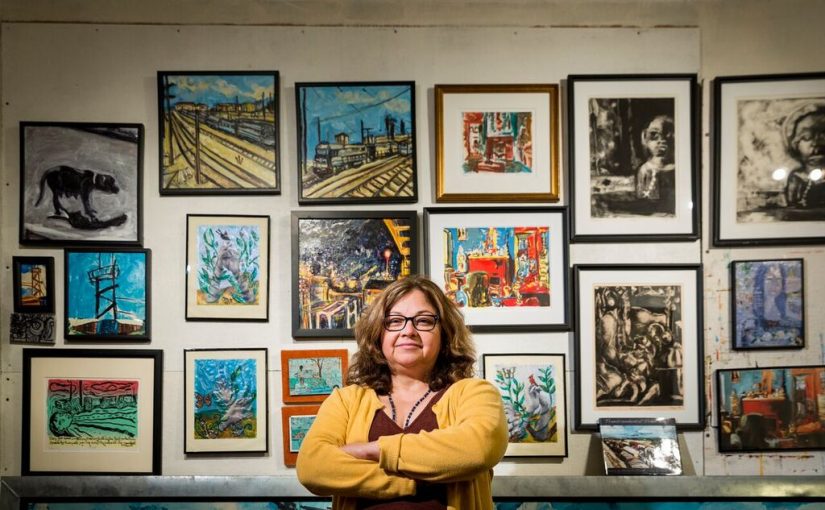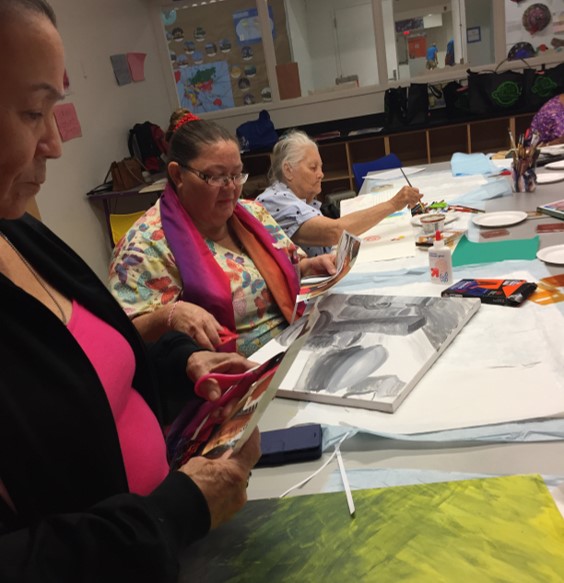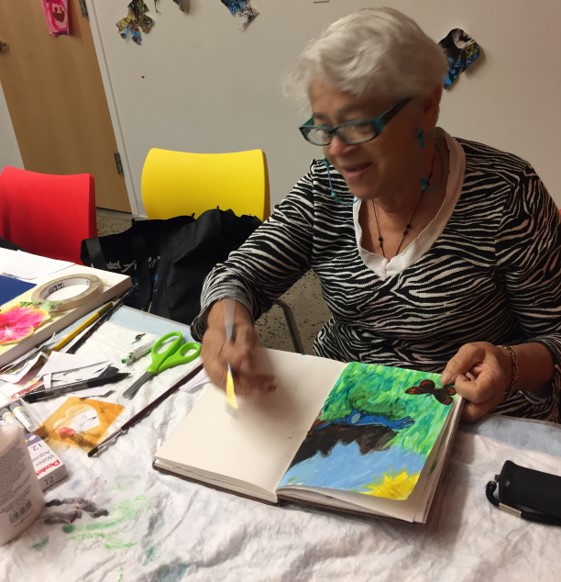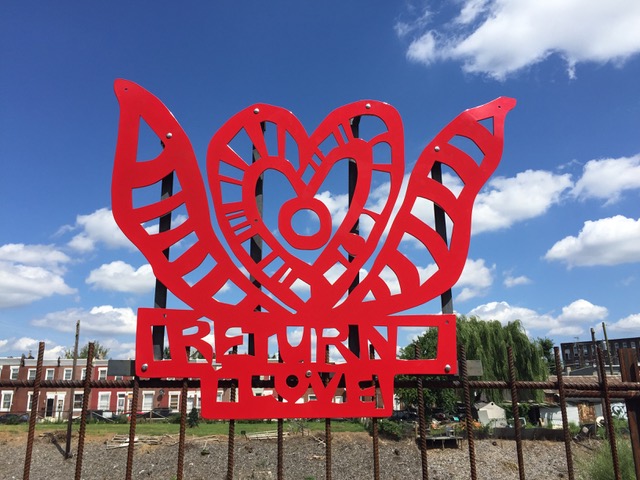
Marta Sanchez is a teaching artist and visual artist living and working in Philadelphia, PA. She has taught at several community centers and universities including the Tyler School of Art, St. Joseph’s University, Taller Puertorriqueño, and The Mann Senior Center. Her work is part of several permanent collections including Yale University, University of Michigan, University of Texas and the Philadelphia Museum of Art among others.
We asked Marta to tell us about making art, her teaching artistry, and what she loves about working teaching Creative Aging workshops to older adults.
Lifetime Arts: What is your primary artistic medium?
Marta Sanchez: I am most recognized for my paintings on tin and copper but I am also a printmaker. Most recently I created a series of steel sculptures that were installed in North Philadelphia.
LA: How did you get started as a teaching artist?
MS: I was invited to teach workshops at Taller Puertorriqueño almost twenty years ago and realized how much more fulfilling my life became when sharing the process of art making. Creating with the community offers the proof of the importance of art and culture in our society. It touches on the universal desire for understanding each other and sparks compassion between artist and audience.

LA: What led you to working in Creative Aging?
MS: My prior experience working with different age groups and institutions in the Philadelphia area paved the way for me to work with seniors from the Mann Older Adult Center in Northeast Philadelphia and other locations across the city. I was very excited when I was invited to teach a class on memory books to seniors [at Taller Puertorriqueño]. Working on narratives in my studio offered me the chance to share my work and to ask my students for their own stories.
LA: What is one of the most challenging or surprising aspects of this work?
MS: When using the term challenging I want to clarify that this is not a laborious challenge but one that makes me think from the perspective of the student. I realized that some of my students had illness or failing sight. To work this into the process of art making just meant that I had to tailor materials that fit their needs.
For a student that was visually impaired I offered Sharpies (thick magic markers) so that she could more easily see the lines and designs she created. The use of various materials offered the class strong independence in art making as they experimented with pencil, watercolor, and fabric stencils. I have found [working with older adults] not to be so much a surprise as pure wonderment.
LA: Tell us about the class you are teaching at Taller Puertorriqueño in Philadelphia.
MS: I am teaching a class on the art of memoir books.* This workshop is a mixed media course with journaling, sketching, paintings and performing narrative dance. I am collaborating with dancer Christina Castro to incorporate movement into the experience. During the dance workshops we either made large gesture drawings or colorful scarves to dance with. My second project with the class will be mixed media portrait collages of each participant. I hope that our last four classes will offer the chance to reflect before we wrap up our time together.

LA: Tell us a short story from mixed media class that demonstrates the benefits of Creative Aging for participants.
MS: Most of the time we circle together and work, sharing experiences of our everyday lives and of our family and past origins.
Some have very vivid memories of their past with parents while others generalize that part of their lives as it is no longer a focal point.
I stress that they can share with us as the audience anything they choose and do not demand any specific format in the memory book. I just request any aspect of a memory they wanted to share with us.
I am having them work on one accordion book to share a specific moment in time or family tree. Their second book, which is their sketchbook, can hold many more images and journaling. They decide what they want to share and when. They have enjoyed the act of drawing and creating form, as well as mixed media collage. It seems that as soon as we finish greeting each other and getting our supplies we work for a while and then we have to clean up. We do enjoy our time together. All my family lives in Texas so [the participants offer] the loving looks and hugs I truly appreciate.
LA: What do you have planned for the culminating event at Taller?
MS: We will have an art exhibit of their accordion books as well as dance performance and video of stories.

LA: What are your current and upcoming projects of both your own work and teaching assignments?
MS: I just completed a large public art piece for an area in Philadelphia that is slowly recovering from the opioid crisis in the neighborhood. “Reclaiming Gurney St.” which is a steel installation that offered a collaborative component with poet David Acosta and the community of seniors and youths.
The second piece I am working on will be a public art piece not far from Gurney St. in a new senior apartment complex. I am also in a few exhibitions. My website has information on my current and past events. Please feel free to visit: http://www.artedemarta.com/events/
Thank you Marta, we are thrilled to have you on our roster of teaching artists.
*Marta’s class at Taller Puertorriqueño in Philadephia, PA is part of Aroha Philanthropies’ Seeding Vitality Arts initiative.
Interview and reporting by Lindsey Francis
Search our Creative Aging Teaching Artist Roster to find qualified teaching artists in your area.

